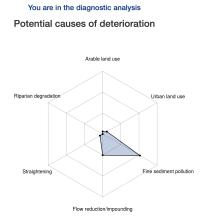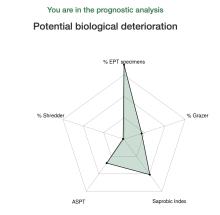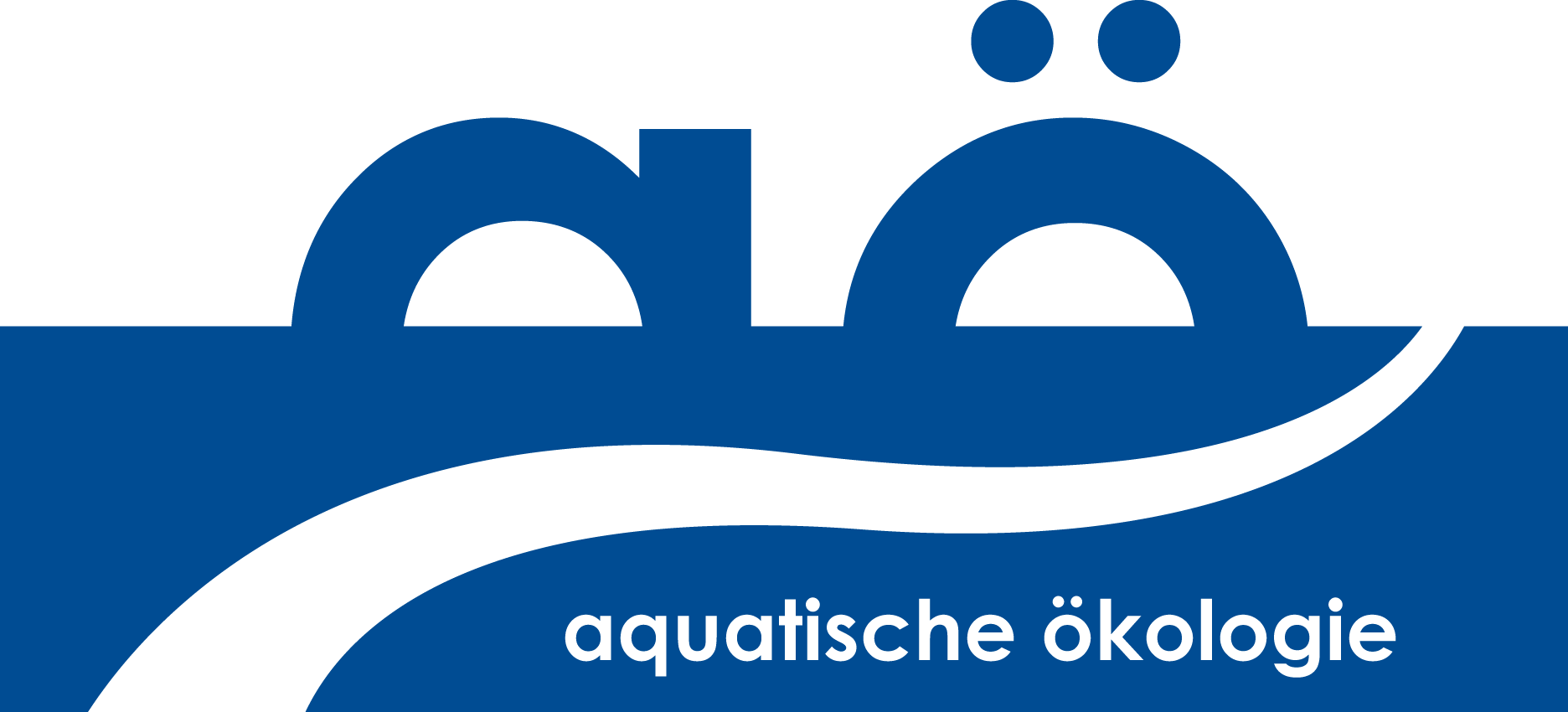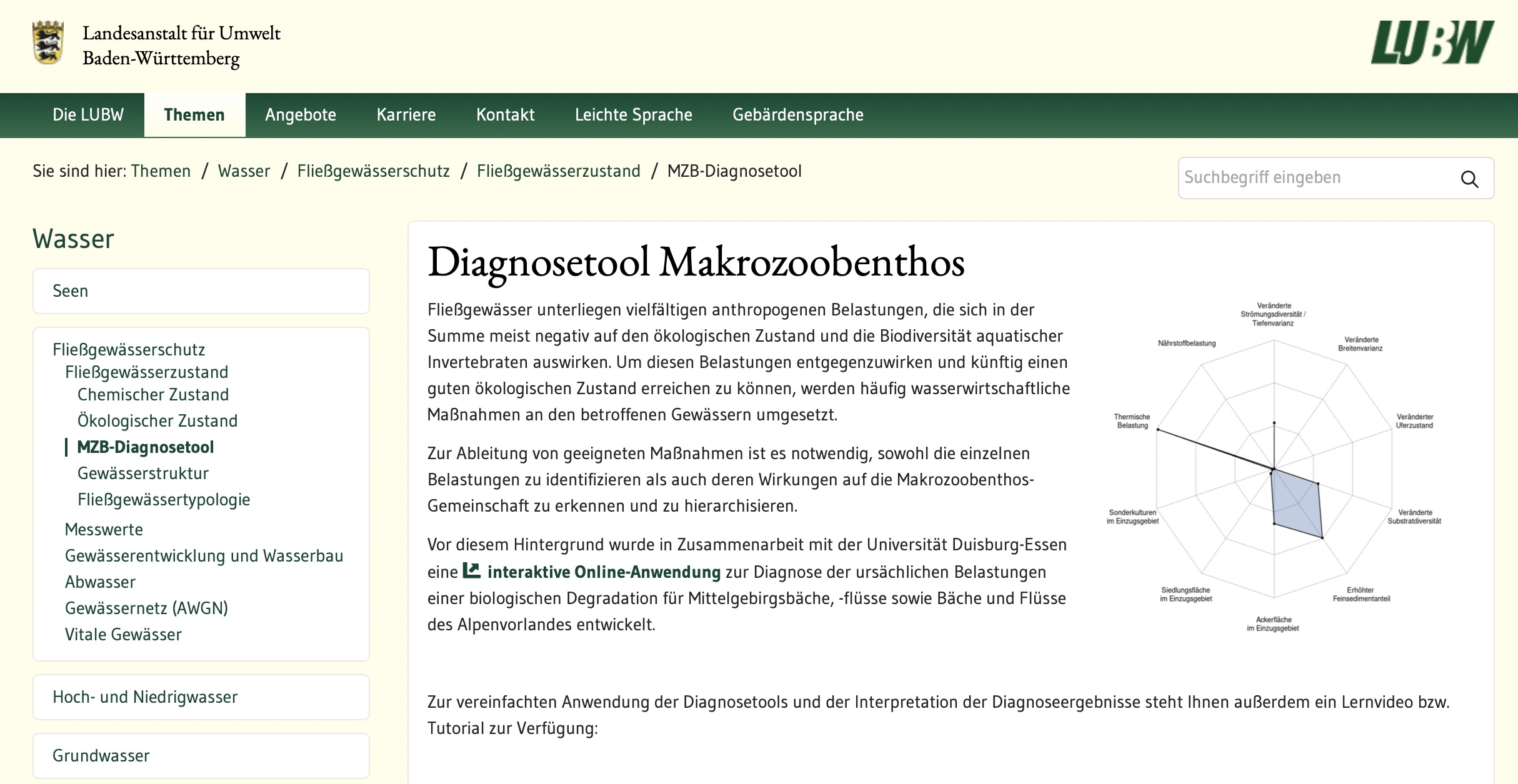River systems are often impacted by multiple stressors such as pollution, physical habitat degradation and catchment land uses. Restoration practitioners require knowledge of stressors and their hierarchy in targeted water bodies, in order to derive ecologically effective restoration measures. Diagnostic tools can help inform the derivation of appropriate measures.
Full description
Rivers under the influence of multiple stressors are ecologically malfunctioning and inhabit a poor biodiversity. In order to reverse and improve the situation, restoration and management are required, to ensure that water quality and physical habitat conditions are sufficient to inhabit a river type-specific fauna and flora. However, river monitoring and assessment are often insufficient or even incapable of providing the biological and ecological information that is required to derive appropriate management options. How would you, for example, derive a restoration scheme from the mere knowledge of a handful of biological metrics, which constitute the core of many river assessment schemes in Europe?
Diagnostic tools can help bridging the gap between assessment and restoration. They are based upon multiple cause-and-effect chains, each chain of which conceptualises the link between causes (stressors) and effects (biological responses). The chains are interlinked by means of a Bayesian Network (BN), which provides a probabilistic model framework for diagnosis. More specifically, the BN allows to calculate the probabilities of multiple causes with which they are causal of multiple biological effects. Thereby, the biological effects (e.g., number and proportion of particular organism groups, ecological preferences, assessment indices) constitute the input variables for diagnosis. The output is a list of potential causes and probability values for each cause, which allows to put the causes into a hierarchical context. In recent case studies, several diagnostic tools have been developed, which were proven useful to inform the derivation of restoration and management schemes.
The model framework for diagnostic tools can be based upon monitoring data, expertise from domain experts and literature – or a combination of all sources of information.
Diagnostic tools can help bridging the gap between assessment and restoration. They are based upon multiple cause-and-effect chains, each chain of which conceptualises the link between causes (stressors) and effects (biological responses). The chains are interlinked by means of a Bayesian Network (BN), which provides a probabilistic model framework for diagnosis. More specifically, the BN allows to calculate the probabilities of multiple causes with which they are causal of multiple biological effects. Thereby, the biological effects (e.g., number and proportion of particular organism groups, ecological preferences, assessment indices) constitute the input variables for diagnosis. The output is a list of potential causes and probability values for each cause, which allows to put the causes into a hierarchical context. In recent case studies, several diagnostic tools have been developed, which were proven useful to inform the derivation of restoration and management schemes.
The model framework for diagnostic tools can be based upon monitoring data, expertise from domain experts and literature – or a combination of all sources of information.
Value proposition
The advantage of using diagnostic tools in river restoration and assessment is manifold:
First, data-driven evidence from empirical analyses will be converted to cause-effect chains, which allows to structure the relevant stressors and biological / ecological effects in a targeted water body.
Second, probabilistic modelling allows to evaluate the causal influence of candidate stressors given a particular combination of ecological inputs.
Third, individual causes’ probabilities allow to hierarchically structure candidate cause, i.e. the output allows to order important from less important stressors. In concert, the output of diagnostic tools thus helps better link ecological status monitoring with restoration and management options that aim to improve the ecological status.
First, data-driven evidence from empirical analyses will be converted to cause-effect chains, which allows to structure the relevant stressors and biological / ecological effects in a targeted water body.
Second, probabilistic modelling allows to evaluate the causal influence of candidate stressors given a particular combination of ecological inputs.
Third, individual causes’ probabilities allow to hierarchically structure candidate cause, i.e. the output allows to order important from less important stressors. In concert, the output of diagnostic tools thus helps better link ecological status monitoring with restoration and management options that aim to improve the ecological status.
Payment conditions
Individual contract (payment rates and details to be subjected and defined in the contract)
Product pricing
Implementation time
180 Days
Brochure or other document




